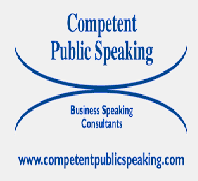Communication Therapeutic Tool for Health Professionals Order Instructions: WRITTEN ASSIGNMENT
DETAILS OF TASK:
Word Limit: 2500 WORDS
Communication is an extremely powerful therapeutic tool required by all health professionals.

Communication facilitates the expression of thoughts, feelings and attitudes, assists in gathering important information, and supports therapeutic relationships.
In view of this statement:
(i) Define the terms communication and therapeutic communication. [The definitions should be in your own words but supported by scholarly references]
(ii) Identify two (2) barriers to communicating with clients/patients.
(iii) Discuss strategies to effectively manage the two (2) barriers you have identified.
STEPS IN TASK DEVELOPMENT:
Step 1: Use your textbook and scholarly articles to identify definitions of therapeutic communication and learn about specific communication barriers and management strategies you have chosen. Make sure you find evidence to support the existence of the barriers and effectiveness of the strategies to manage the barriers you identified.
Step 2: Consider two (2) important or significant barriers and the key strategies for managing these barriers.
Step 3: Research your ideas further using credible academic sources. [Database searching; academic writing and referencing skills are taught in Weeks 1,2 and 3 to assist you with this task].
Step 4: Write up your findings as a formal piece of scholarly writing, addressing all three questions above.
Include a clear introduction, body paragraphs, and a conclusion paragraph. The marking rubric indicates the expectations for each component of your essay, at each grade level.
Word limit: 2500 words including in-text references
Presentation requirements: Please observe the following formatting instructions:
Word document (doc; docx) [do not PDF or lock the document as Markers will work within the document to provide feedback]
12 point font and double-spaced
Save as Student ID_NUR1110 written assignment
Student ID only (no names) in header or footer
Page number
Communication Therapeutic Tool for Health Professionals Sample Answer
Introduction
It is important to maintain good communication between the patients and nurses with the aim of achieving the positive outcome of the individualized nursing care offered. To achieve this objective requires the understanding of the patients by the nurses through demonstration of sincerity, kindness, and courtesy. The necessary confidentiality should be adopted which indicates the devotion of the healthcare providers while communicating with the patients. The healthcare providers should also remember that communication also requires the involvement of the person or people surrounding the patients such as the family members or the care providers at home (Meuter et al 2015). In this case, the communication language should be understood by all those involved in the process. Experience and education also matter during the process of communication. During the process of interaction, there is a special kind of communication identified as psychotherapy which involves one or more patients with the therapist with the aim of acquiring the desired results among the patients (Boddy et al, 2013).
Despite the fact that verbal interaction is involved in therapeutic communication, it is different from other social conventions because of its focus, objectives, topics, settings, and roles. Therapeutic relationships are supported by the active communication between the patients and healthcare providers. However, there are barriers that hinder the effective communication and the maintenance of the therapeutic relationships between the patients and the healthcare providers. These factors that hinder effective communication can either be classified as patient barriers or the healthcare professional barriers (Swei et al, 2016). The healthcare professional barriers include the high workload, lack of support or the staff conflict while the patient barriers include environmental items such as lack of privacy and control or the emotional weakness. In this paper, better exploration of the barriers to communication and therapeutic communications would be done while also identifying the best strategies to address the barriers thus enhancing effectiveness during healthcare related interactions (Yelland et al, 2016).
Communication Therapeutic Tool for Health Professionals
Communication is considered to be essential in the nursing field especially in areas concerned with education, health promotion, rehabilitation, therapy, treatment and prevention interventions. In this case, communication is identified as the exchange of feelings, thoughts, and information between two people either through speech or other means when interacting (Wong et al, 2015). The message creation and transaction process occur in the context that consists of psychological conditions, social values, and cultural values and physical space. Through communication, consistent and accurate performance and easy nursing work are enhanced. Therefore, healthcare professionals are protected, and patient satisfaction is also increased. The importance of communication during healthcare interactions makes it necessary for healthcare professionals to be properly trained in communications skills. The nature of the relationship created during communication depends on how the sequence of communication is understood by the parties’ involved (Suurmond et al, 2016).
Effective communication requires the understanding of the experiences expressed by the patients carefully. The sincere intention of the healthcare providers to understand and handle the patient’s concerns through the application of the necessary skills is required to ensure communication is effective in nature. The negative conclusions and attitudes are at most times the results of failing to recognize the two-way communication. The interactions through communication results to the therapeutic relationship between the healthcare providers and the patients. Therapeutic relationships are thus considered important during the communication between the patients and healthcare providers.
Therapeutic Communication
Therapeutic communication entails the strategies adopted with the focus on advancing the emotional and physical well-being of the patients. The psychotherapy form of communication uses both verbal and non-verbal techniques (Shahid et al, 2013). It is important for the nurses to learn the principles of therapeutic communication as it helps them in best meeting the patient’s needs. The main objective of therapeutic communication is providing the best care environment for the patient where they feel understood, well cared for and thus leading to the establishment of a strong long-lasting relationship where they can freely express their concerns. Through the therapeutic communication, psychological distress is decreased while increasing the self-worth through assessment and modification of behavior, determination of illness after collecting information and also through the provision of health education. The therapy should be patient-centered while it is the role of the therapist to build an effective therapeutic relationship (Shwei et al, 2016). Expressing the thoughts and feelings by sharing of observations is a method adopted in therapeutic communication.
Silence is also used as the method where observation of the non-verbal cues among the patient is done by the therapist. A mutual understanding has to be there for therapeutic communication to be successful thus preventing cases of misunderstanding. The continual and genuine concern for what is expressed by the patient is promoted through open communication. Constant understanding of human behaviors and possessing the observational skills are essential for any healthcare provider that seeks to develop the therapeutic communication skills through verbal or non-verbal cues. The proper adoption and implementation of therapeutic communication impact the health of the patients positively.
Communication Therapeutic Tool for Health Professionals and Language Barrier to Communicating with Patients
There are instances where communication between the patients and the healthcare providers is faced with barriers thus negatively affecting the interaction process. The language barrier is one of the hindrances that affect the communication process thus making it a growing concern among the healthcare providers and the patients. The language communication barrier has resulted in adverse effects such as poor adherence to the treatment services, less access to quality care which results in the increased health disparities (Paternotte et al, 2015). The issue is vital among healthcare providers because of the need for the lengthy and frequent patient interactions and intimate contact. The healthcare providers have continuously reported language barrier as a great impediment provision of quality health care and also making their work more challenging during delivery of services. An example is the impediment caused when the patients have limited English proficiency. Such a case has been said to result in the misunderstood medical information and incomplete nursing assessments in the healthcare field (O’Halloran, 2015). The limited English language proficiency among the patients has also led to the poor therapeutic relationships between the patients and the healthcare providers. The language barrier between the patients and the healthcare professionals has also affected the ability of the patients to explain their symptoms and also making appointments in their bid to seek the healthcare services.
Due to the limited interactions, the patients experiencing the language barriers also report the lower use of the preventative type of care and fewer visits to the healthcare providers. An example is where the non-English speaking women are likely to receive less Pap tests, breast examination or mammogram. In such a case, the language barrier to effective communication acts as a major impediment to the women from receiving the regular primary care (O’hagan et al, 2014). The language barriers have also been identified to contribute to the poor nurse-patient relationship which has a negative impact on the services delivered by the healthcare providers.
The poor therapeutic relationships attributed to the language barrier of communication leads to low patient satisfaction rates for the health care services provided. The use of the second language by the healthcare providers or the patients in the health sector is a major factor for miscommunication which can be life-threatening. The communication errors due to the language barriers could be as a result of the rising number of foreign-trained staff or the immigration of the patients in a particular health center or area. In this case, the language barriers to communication result in poor therapeutic relationships and also affects the efficient delivery of healthcare services (Mole et al, 2016).
Management Strategies for Language Barrier and Communication Therapeutic Tool for Health Professionals
The linguistically diverse populations amongst the healthcare providers and the patients make it necessary for the adoption of the right strategies with the aim of addressing the communication problems caused by the language barrier. The need for adopting the effective strategies is due to the adverse effects that arise during the language-discrepant communication. Choosing aid so as to enhance communication is one of the strategies to transcend the language barrier to communication. These materials include the translated or culturally appropriate which are also written well in a plain language. According to (Meuter et al, 2015) the use of the visuals such as graphs and pictures could also be used as essential materials that enhance communication thus addressing the language barrier of communication effectively. The use of qualified medical interpreters can be helpful in dealing with the language barrier to communication. These interpreters can be the trained bilingual clinical staff, workers for the language agencies or the community-based medical interpreters among others.
The qualified medical interpreters are efficient in according the necessary support to the patients with limited English proficiency. In this case, they help in translation of instructions from the healthcare providers to the patients, interpretation of languages and also ensuring that ethical standards are followed during the communication process (Merlo et al, 2015). It is important to ensure that qualified medical interpreters are used for translations since they are more conversant with the scientific or technical language, diverse in nature and less likely to commit the medical errors. Such actions would efficiently address the language barriers to communication experienced by the healthcare providers and the patients.
The provision of the language classes to the healthcare providers would help in enhancing the proficiency of their language skills. Such a strategy would help lessen the language barriers between the patients and the healthcare providers (McGrath, 2013). It is also important to encourage healthcare providers to participate in the microscopic and macroscopic activities making them more aware of the language services in healthcare. The adoption and implementation of these strategies would be effective in addressing disparities caused by the language barrier of communication.
Health Literacy Barrier to Communicating with Patients
Health literacy is another barrier to communication which affects the smooth interaction between the healthcare providers and the patients. Health literacy is identified to be the degree to which a person or individuals can obtain, understand or process the basic services and information provided to them by the healthcare providers (Mother, 2014). The understanding is required when making the appropriate health decisions. Health literacy is identified to be a major obstacle during the provision of healthcare. Health literacy is a dynamic process involving both the healthcare provider and the patients. Health literacy is identified to be a major hindrance to the communication or interaction since the individuals with inadequate health literacy are more likely to misunderstand the information provided to them.
They would face difficulty to follow the instructions provided for medical purposes by their care providers. The patients with low health literacy would not be able to consult or interact with their healthcare providers well thus they might end up infrequently or inappropriately using health care services (Hamrosi, 2014). Effective communication could be affected by the tendency of health care providers stereotyping the patients by either under or overestimating their health literacy. One of the major challenges that should be considered by healthcare providers while communicating with the low health literacy individuals is gaining their trust.
There are instances where patients hide the fact that they are facing difficulties when told to interpret some information because they feel embarrassed or do not seem to be challenging the health care providers (Clark et al, 2014). Such a case is the perfect example of how the low health literacy levels of individuals hinder effective communication with the healthcare providers. According to (Darlton et al, 2014) the most unfortunate thing is that the patients with the low health literacy might not receive care from the same person over time which makes it cumbersome for the development and maintenance of the good relationships. In this case, there is ineffective therapeutic communication and poor interaction between the healthcare provider and the patient. The healthcare providers can assess the health literacy of the patients by evaluating their cultural norms and linguistic skills which are essential for integration during the patient’s care plan with the aim of addressing the communication problems brought about by low health literacy levels (Cochrane, 2016). The importance of assessments using the linguistic skills and cultural norms is because they have some relationship with the health literacy barrier to communication. The low health literacy is a significant barrier to communication and effective patient care. The full spectrum of health literacy should be understood by the healthcare providers in the context of the roles they play. Therefore, the problem of health literacy should be acknowledged as a major obstacle to effective interactions during the provision of healthcare services.
Management Strategies of Health Literacy Communication Barrier
There are various strategies adopted to address the health literacy barrier to communication (Clark et al, 2014). Development of patient-friendly education materials and plain language is identified to be effective in addressing the issue of low literacy among the patients thus enhancing effective communication. These education materials include printed health information in the form of books, brochures, and articles. It is also important to educate the healthcare providers about health literacy and its related issues since inadequate knowledge by the professionals makes it more challenging to handle cases of low health literacy that hinder the effective interactions (Clark et al, 2014). Redesigning the patient informed consent forms is important in increasing the literacy levels of the patients thus making it an effective strategy to manage the barrier (Chedid, 2013). The teach-back technique which is considered to be an established communication method can be adopted during the communication process with the patient which makes it possible to manage the low health literacy issues. These communication methods and educational resources would be effective in easing the health literacy burden that affects the interactions. Allowing the healthcare providers more time with their patient with low health literacy in a bid to create room for fruitful interactions is essential in managing the issue. In this case, the environment where the interactions or the therapeutic relationships been created is taking place is a vital factor to be considered by the healthcare providers who should ensure it does not fault the process of communication which is essential in enhancing the appropriate healthcare procedures and outcomes ( Boddy et al, 2013). The effective implementation of these strategies would result in positive outcomes during communications (Boddy et al, 2013).
Communication Therapeutic Tool for Health Professionals Conclusion
In a nutshell, effective communication and maintenance of the therapeutic relationships are essential in ensuring the services provided to the patients are quality and efficiently delivered. It is the role of the patients and healthcare providers to cooperate and interact appropriately. The main objective of therapeutic communication is providing the best care environment for the patient where they feel understood, well cared for by the healthcare providers. There have been cases where healthcare providers do not allow room for communication. Such cases have been said to result in the adverse effects thus making it impossible to build and maintain the therapeutic relationships. Various barriers to effective communication such as language and health literacy should be appropriately managed through the effective strategies to ensure the interaction process is smooth (Boddy et al, 2013). Some of the major strategies adopted to manage the communication barriers between the patients and healthcare providers include the use of qualified interpreters to help solve the language problem and use of educational materials for the patients and training nurses for addressing health literacy issue. The adoption of these strategies would promote effective communication between the healthcare providers and patients which also improves the delivery of healthcare services.
Communication Therapeutic Tool for Health Professionals References
Boddy, J., Chenoweth, L., McLennan, V., & Daly, M. (2013). It’s just too hard! Australian health care practitioner perspectives on barriers to advance care planning. Australian journal of primary health, 19(1), 38-45.
Chedid, R. J., Dew, A., & Veitch, C. (2013). Barriers to the use of Information and Communication Technology by occupational therapists working in a rural area of New South Wales, Australia. Australian Occupational Therapy Journal, 60(3), 197-205. doi:10.1111/1440-1630.12016
Clark, A., Gilbert, A., Rao, D., & Kerr, L. (2014). ‘Excuse me, do any of you ladies speak English? ’Perspectives of refugee women living in South Australia: barriers to accessing primary health care and achieving the Quality Use of Medicines. Australian journal of primary health, 20(1), 92-97.
Cochrane, F. C., Brown, L., Siyambalapitiya, S., & Plant, C. (2016). “… Trial and error…”: Speech-language pathologists’ perspectives of working with Indigenous Australian adults with acquired communication disorders. International journal of speech-language pathology, 18(5), 420-431.
Dalton, J. A., Rodger, D. L., Wilmore, M., Skuse, A. J., Humphreys, S., Flabouris, M., & Clifton, V. L. (2014). “Who’s afraid?”: Attitudes of midwives to the use of information and communication technologies (ICTs) for delivery of pregnancy-related health information. Women and Birth, 27(3), 168-173.
Hamrosi, K. K., Raynor, D. K., & Aslani, P. (2014). Enhancing the provision of written medicine information in Australia: pharmacist, general practitioner and consumer perceptions of the barriers and facilitators. BMC health services research, 14(1), 183.
Mather, C., Cummings, E., & Allen, P. (2014). Nurses’ use of mobile devices to access information in health care environments in Australia: a survey of undergraduate students. JMIR mHealth and uHealth, 2(4), e56.
McGrath, P., Henderson, D., & Holewa, H. (2013). Language issues: an important professional practice dimension for Australian international medical graduates. Communication & medicine, 10(3), 191.
Merlo, G., Page, K., Ratcliffe, J., Halton, K., & Graves, N. (2015). Bridging the gap: exploring the barriers to using economic evidence in healthcare decision making and strategies for improving uptake. Applied health economics and health policy, 13(3), 303-309.
Meuter, R. I., Gallois, C., Segalowitz, N. S., Ryder, A. G., & Hocking, J. (2015). Overcoming language barriers in healthcare: A protocol for investigating safe and effective communication when patients or clinicians use a second language. BMC Health Services Research, 15(1), 1-5. doi:10.1186/s12913-015-1024-8
Mole, T. B., Begum, H., Cooper-Moss, N., Wheelhouse, R., MacKeith, P., Sanders, T., & Wass, V. (2016). Limits of ‘patient-centredness’: valuing contextually specific communication patterns. Medical Education, 50(3), 359-369. doi:10.1111/medu.12946
O’hagan, S., Manias, E., Elder, C., Pill, J., Woodward‐Kron, R., McNamara, T., … & McColl, G. (2014). What counts as effective communication in nursing? Evidence from nurse educators’ and clinicians’ feedback on nurse interactions with simulated patients. Journal of advanced nursing, 70(6), 1344-1355
O’Halloran, R., Worrall, L., & Hickson, L. (2015). Environmental factors that influence communication between patients and their healthcare providers in acute hospital stroke units: an observational study. International Journal of Language & Communication Disorders, 1-18.
Palmer, R., & Paterson, G. (2013). To what extent can people with communication difficulties contribute to health research?. Nurse Researcher, 20(3), 12-16.
Paternotte, E., van Dulmen, S., van der Lee, N., Scherpbier, A. J., & Scheele, F. (2015). Factors influencing intercultural doctor-patient communication: A realist review. Patient education and counseling, 98(4), 420-445.
Schwei, R. J., Del Pozo, S., Agger-Gupta, N., Alvarado-Little, W., Bagchi, A., Chen, A. H., … & Jacobs, E. A. (2016). Changes in research on language barriers in health care since 2003: A cross-sectional review study. International journal of nursing studies, 54, 36-44.
Shahid, S., Durey, A., Bessarab, D., Aoun, S. M., & Thompson, S. C. (2013). Identifying barriers and improving communication between cancer service providers and Aboriginal patients and their families: the perspective of service providers. BMC health services research, 13(1), 460.
Suurmond, J., Rosenmöller, D. L., el Mesbahi, H., Lamkaddem, M., & Essink-Bot, M. L. (2016). Barriers in access to home care services among ethnic minority and Dutch elderly–A qualitative study. International journal of nursing studies, 54, 23-35.
Wong, P., Liamputtong, P., Koch, S., & Rawson, H. (2015). Families’ experiences of their interactions with staff in an Australian intensive care unit (ICU): A qualitative study. Intensive and Critical Care Nursing, 31(1), 51-63.
Yelland, J., Riggs, E., Szwarc, J., Casey, S., Duell-Piening, P., Chesters, D., … & Brown, S. (2016). Compromised communication: a qualitative study exploring Afghan families and health professionals’ experience of interpreting support in Australian maternity care. BMJ quality & safety, 25(4), e1-e1.












